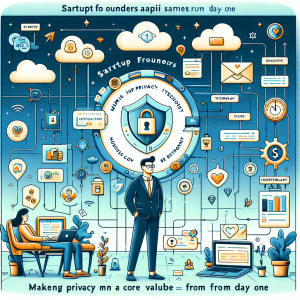Let’s be honest — the cybersecurity grind can feel like an endless game of whack-a-mole. The patches never stop, the threats stay advanced and persistent, and sometimes you’re tempted to throw your laptop out the window just to reboot your perspective. But what if there’s another path? One that still leverages your threat-hunting ninja skills — just with fewer late night panic patches and more freedom. We spoke to five cybersecurity professionals who successfully shifted tracks into adjacent digital careers — and lived to tell the tale (and earn just as well too). If you’ve been quietly flirting with the idea of change, pull up a chair and get inspired.
1. The Analyst Who Pivoted to Privacy Consulting
Name: Jen K.
Then: Security Analyst at a Fortune 500 firm
Now: Independent Privacy Consultant
“After six years of drowning in SIEM alerts and explaining basic phishing to execs weekly, I realized what I loved was not defending the perimeter — it was educating people about why data matters. I took a certification in privacy law (CCPA and GDPR, you know the alphabet soup), hung my digital shingle, and started advising small to mid-size companies. Thanks to communities like Verify Now, I found gigs where I also advised on platform compliance and smart use of temporary phone numbers for verification to safeguard against user abuse.”
Insider Tip: Leverage your existing security background to stand out in the privacy space. Most lawyers don’t speak “packet capture.” You do.
2. The SOC Engineer Turned Developer Advocate
Name: Marcus V.
Then: Tier II SOC Engineer
Now: Developer Advocate at a cybersecurity startup
“Honestly, I got tired of playing defense. I was explaining the same exploits and tools over and over in Slack channels. Then it hit me: I didn’t hate the work — I hated the delivery. Now I create technical content, host livestreams, and help devs build safer apps from day one. My first breakout post on temp number-based auth flows (thanks again, Verify Now!) landed me 17K views and three job offers.”
Insider Tip: Being a developer advocate isn’t code-only. If you understand threat models and can explain them with memes and metaphors, this role was literally made for you.
3. The Pen Tester Who Found Gold in Governance
Name: Laila N.
Then: Freelance Penetration Tester
Now: GRC Strategist at an AI Firm
“I loved breaking things. It was my jam. But what I didn’t love? The lack of appreciation for the process. What did impress folks was when I showed them how my hacks exposed gaps in governance. So I leaned into GRC (Governance, Risk & Compliance — yeah, the ‘boring stuff’), and now I help companies align security ops with strategic business goals. Bonus? I get treated like an asset, not an attacker.”
Insider Tip: GRC isn’t glamorous, but it pays and scales. Plus, it’s where real change happens. Dive deep into tools like Verify Now’s user verification strategies (*yes*, temporary phone numbers for verification shine here) and automate the repetitive paperwork away.
4. The Blue Team Lead Who Became a Product Manager
Name: Oscar D.
Then: Defensive Lead at a Managed Security Service Provider
Now: Cybersecurity Product Manager at a SaaS company
“Every time our vendor delivered a solution that barely responded to our threat use-cases, I muttered, ‘If I built this product…’ Now I do. I transitioned into product management and brought my ‘boots-on-the-ground’ view into roadmap prioritization. We just launched a new anti-abuse module that uses temp phone numbers to verify suspicious signups. Could’ve used that three years ago.”
Insider Tip: Product teams desperately need user stories from seasoned defenders. If you know the gap between a spec sheet and a real-life incident, you already speak product. Just add some Agile buzzwords.
5. The Infosec Educator Who Went Creator-Mode
Name: Sasha W.
Then: Security Awareness Trainer
Now: Content Creator and YouTube security influencer
“After years of trying — and failing — to make phishing training engaging, I realized I was doing it for the wrong audience. So I took the best bits, dropped the HR-mandated monotony, and launched my own channel. Did I expect my explainer on SIM-swapping tactics and temporary phone numbers for verification to go viral? No. Did it? Absolutely.”
Insider Tip: Don’t be afraid to niche down. Your 5-minute tutorial might not resonate with CISOs, but it could rock a startup founder’s world. And now sponsors are paying me more than my old salary. Sorry, not sorry.
Conclusion: Still Cyber. Just Different. Just Better.
Your career in cybersecurity doesn’t have to follow a linear path — especially not one paved with burnout and alert fatigue. Whether you’re aiming to educate, build, advise, or create, there’s a whole realm of possibilities waiting beyond the firewall. And here’s the kicker: your experience is your edge. You don’t need permission to pivot — just a password to purpose (spoiler alert: it’s probably “start-now!”).
Ready to make your move? Join the Verify Now community and meet others using tools like temporary phone numbers for verification in clever, career-elevating ways. Because the only thing better than fighting cybercrime is designing systems that outsmart it — on your own terms.









